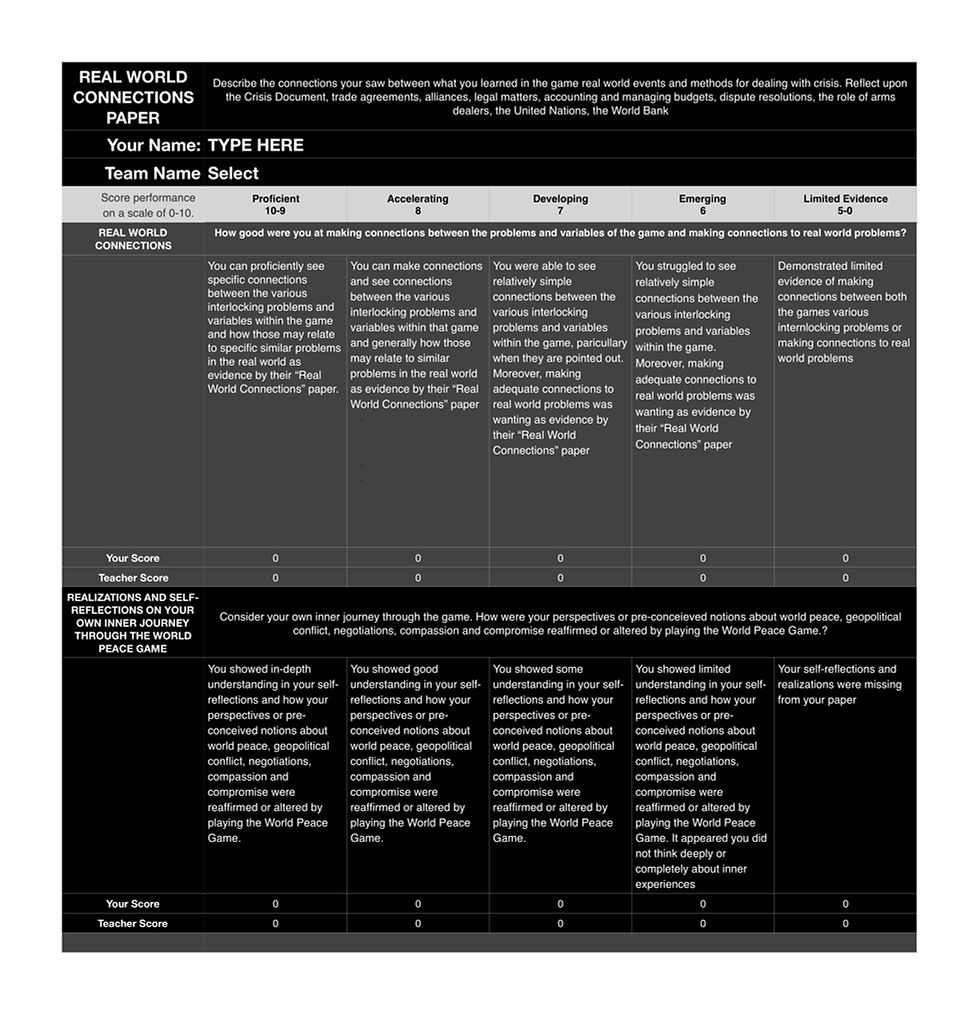
 |  |  |  |  |  |
|---|---|---|---|---|---|
 |  |  |  |  |  |
 |  |  |  |  |  |
 |  |  |  |  |  |
Earth Accord is a geopolitical simulation in which students are asked to solve 50 interlocking world problems, while at the same time, raising the country budget of all nations...
The game can be thought of as a blend of Model United Nations and the game Risk. As a participant, you may be playing the role of a member of a prime minister's cabinet, a board member of the United Nations, or as team member of the World Bank. The game is full of intrigue and emotions and requires strategy-making, information processing, asset organization, financial intelligence, human relations and emotional intelligence, leadership, cooperation, and negotiation skills

 |  |  |  |  |  |
|---|---|---|---|---|---|
 |  |  |  |  |  |
 |  |  |  |  |  |
 |  |  |  |  |  |
 |  |  |  |  |  |
 |  |  |  |  |  |
 |  |  |  |  |  |
 |  |  |  |  |  |
 |  |  |  |  |  |
 |  |  |  |  |  |
 |  |  |  |  |  |
 |  |  |  |  |  |
 |  |  |  |  |  |
 |  |  |  |  |  |
 |  |  |  |  |  |
 |  |  |  |  |  |
 |  |  |  |  |  |
 |  |  |

You
Categories of Assessment- there is a rubric for each category that you can readin full detail down below.

RUBRICS
You can click on each rubric image to expand it in size and see it more clearly. Take good note of what is being assessed so that you can have it in mind during your performance in the game.







Real World Connections Paper
During the post game self assessment period, you will be ask to write a paper describing the real world connections you observed or realized between the game and the real world.
Instructions:
Part 1: Describe the connections your saw between what you learned in the game real world events and methods for dealing with crisis. Reflect upon the Crisis Document, trade agreements, alliances, legal matters, accounting and managing budgets, dispute resolutions, the role of arms dealers, the United Nations, the World Bank etc.
Part 2: Consider your own inner journey through the game. How were your perspectives or preconceived notions about world peace, geopolitical conflict, negotiations, compassion and compromise reaffirmed or altered by playing the World Peace Game?
STRATEGY SUMMARY JOURNAL (SSJ)
The project grade counts as 10% of your overall grade. All other assessments fall into the category of "Mission Assessments" that count for 90% of our grade. You can download a copy of the SSJ Project instructions here
Instructions:
For each game day, complete your SSR. It is best to do this each day after the game ends sometime before you come to school the next day to play. Be disciplined to do so as the memories of your gameplay will still be fresh in your mind. If you try to complete it the next day, or even worse, wait until the final day to fill out your journal, you will make unnecessary mistakes.
For each entry, give as much detail as possible so as to support yourself when it comes time for the teacher to asses your journal. In-depth and detailed writing will earn you a higher assessment ranking. The 6 topics you will write about for each game day are list with little space between them. This does not mean you are to wire one sentence for each, but rather, you are to create the amount of space between each topics as needed to accommodate all your writing. Listed on this page are Game Day1,2 and 3, but that is not all the game days. I just listed 3 to show you the format and keep this document to 1 page, however, you should recreate the format in your journal for each game day you end up playing. Your journal must be handwritten on paper and not kept digitally. You will turn this journal in class the same day that the game ends during the Assessments Session following immediately afterwards.
Journal Elements
Actions Taken: list what actions your team decided to make
Outcomes: what were the cause and effect relationships associated with your actions
Negotiations: summarize the topic and outcome of your negotiations, ones that you were involved in or heard about from your teammates.
Transactions/Trades: state the financial/asset transactions that occurred with your team
Game Day Summary: summarize the major events of what happened in the game as a whole
Strategic Reasoning: summarize the reasons for your actions and articulate the strategic thinking behind them
GAME DAY 1
Actions Taken:
Outcomes:
Negotiations:
Transactions/Trades:
Game Day Summary:
Strategic Reasoning:
GAME DAY 2
Actions Taken:
Outcomes:
Negotiations:
Transactions/Trades:
Game Day Summary:
Strategic Reasoning:
…Day 3, Day 4, Day 5…etc.
OVERALL STRATEGY SUMMARY




Mr.L in Denver, Colorado with John Hunter, the inventor of the World Peace Game



